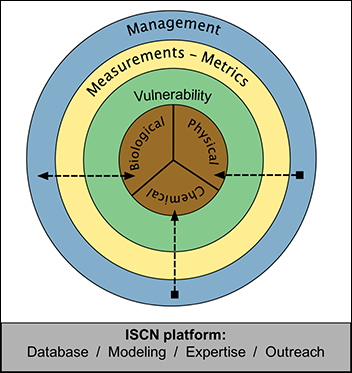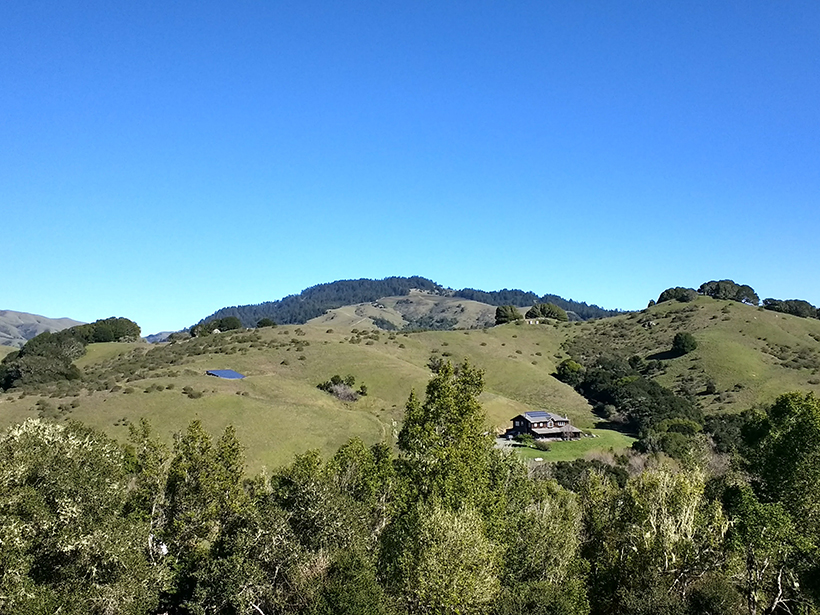Soil organic matter and its carbon content (SOM-C) are key indicators of soil health, ecosystem productivity, and resilience. However, the scientific data sets, tools, and terminology used to describe and analyze processes related to SOM-C differ between managed and unmanaged lands. Carbon cycling studies typically focus on unmanaged systems that are vulnerable to climatic changes (e.g., northern peatlands and permafrost soils), whereas soil health studies are related to actively managed lands (e.g., grazing land, cropland, and forestry). Because the goals and needs of scientists and land managers are converging toward enhancing SOM-C stocks and soil health, the need for an interdisciplinary collaboration has emerged.
The goals and needs of scientists and land managers are converging toward enhancing soil organic matter stocks and soil health.
Early this year, the Stanford School of Earth, Energy and Environmental Sciences hosted the International Soil Carbon Network (ISCN). This organization led a workshop that focused on defining future research priorities in SOM-C science. The workshop aimed to accomplish the following:
- identify key data sets needed to improve our understanding of SOM-C stabilization and destabilization mechanisms
- set up infrastructure to access currently disparate data sets relevant to critical soil processes
- improve the connection between soil carbon cycle science and land management practices
- flesh out the structure of a new platform that will allow the exchange of ideas, data, tools, and expertise between scientists, landowners and managers, and the general public

Fourteen scientists attended the workshop, and six guest speakers also participated in some discussions. Workshop participants visited a grazing land, part of the Marin Carbon Project, that represents a successful “carbon farming” partnership between scientists and landowners. This partnership involves large-scale compost application experiments on grasslands to enhance carbon sequestration in soils.
Our workshop discussions resulted in the drafting of a paper synthesizing current knowledge and gaps and outlining proposals for improved collaboration in soil carbon research. Elements for continued discussion and research include the underrepresentation of SOM-C process data in repositories relative to the scientific literature and the need for a robust and modular modeling platform for developing process-based models that would move field data and localized experiments into a larger Earth system framework.
To address the data repositories issue, a data rescue and curation project will be launched in late 2017 at the AGU Fall Meeting to recover data from repositories and the literature. The resulting data sets will be centralized in ISCN’s new data platform. A new modeling platform will be developed in collaboration with other existing ones to enable model parameterization, hypothesis testing, and model intercomparisons. At the meeting, we also proposed increased interoperability between ISCN and partner networks (e.g., the International Soil Reference and Information Centre (ISRIC), U.S. Geological Survey, U.S. Department of Agriculture, FLUXNET) to improve the platform. As of this June, ISCN now has a formal data-sharing agreement with ISRIC.
Workshop participants recognized the need to link SOM-C science with the societal mandate to manage soils and ecosystems for productivity and carbon sequestration.
Overall, workshop participants recognized the need to identify vulnerabilities and opportunities for linking SOM-C science and the societal mandate to manage soils and ecosystems for productivity and carbon sequestration in future decades. We outlined a path to gain support for the ISCN vision of a collective soil data platform from stakeholders and partners through engagement in coming years.
See more ISCN-related events scheduled for the 2017 AGU Fall Meeting here.
Acknowledgments
The workshop was organized by Jennifer Harden (lead) and Gustaf Hugelius (colead). We thank our guest speakers Rob Jackson and Margaret Torn; breakout coleads Andres Ahlström, Kate Maher, and Alex Konings; and field trip leaders Whendee Silver and John Wick. Sintana Vergara and Jennifer Harden helped write this report; Kathe Todd-Brown and Rodrigo Vargas provided feedback.
Author Information
Julie Loisel (email: [email protected]), Department of Geography, Texas A&M University, College Station; Avni Malhotra, Environmental Sciences Division and Climate Change Science Institute, Oak Ridge National Laboratory, Oak Ridge, Tenn.; and Claire Phillips, Forage Seed and Cereal Research Unit, Agricultural Research Service, U.S. Department of Agriculture, Corvallis, Ore.
Citation:
Loisel, J.,Malhotra, A., and Phillips, C. (2017), A new platform for managing soil carbon and soil health, Eos, 98, https://doi.org/10.1029/2017EO080753. Published on 25 August 2017.
Text © 2017. The authors. CC BY-NC-ND 3.0
Except where otherwise noted, images are subject to copyright. Any reuse without express permission from the copyright owner is prohibited.

